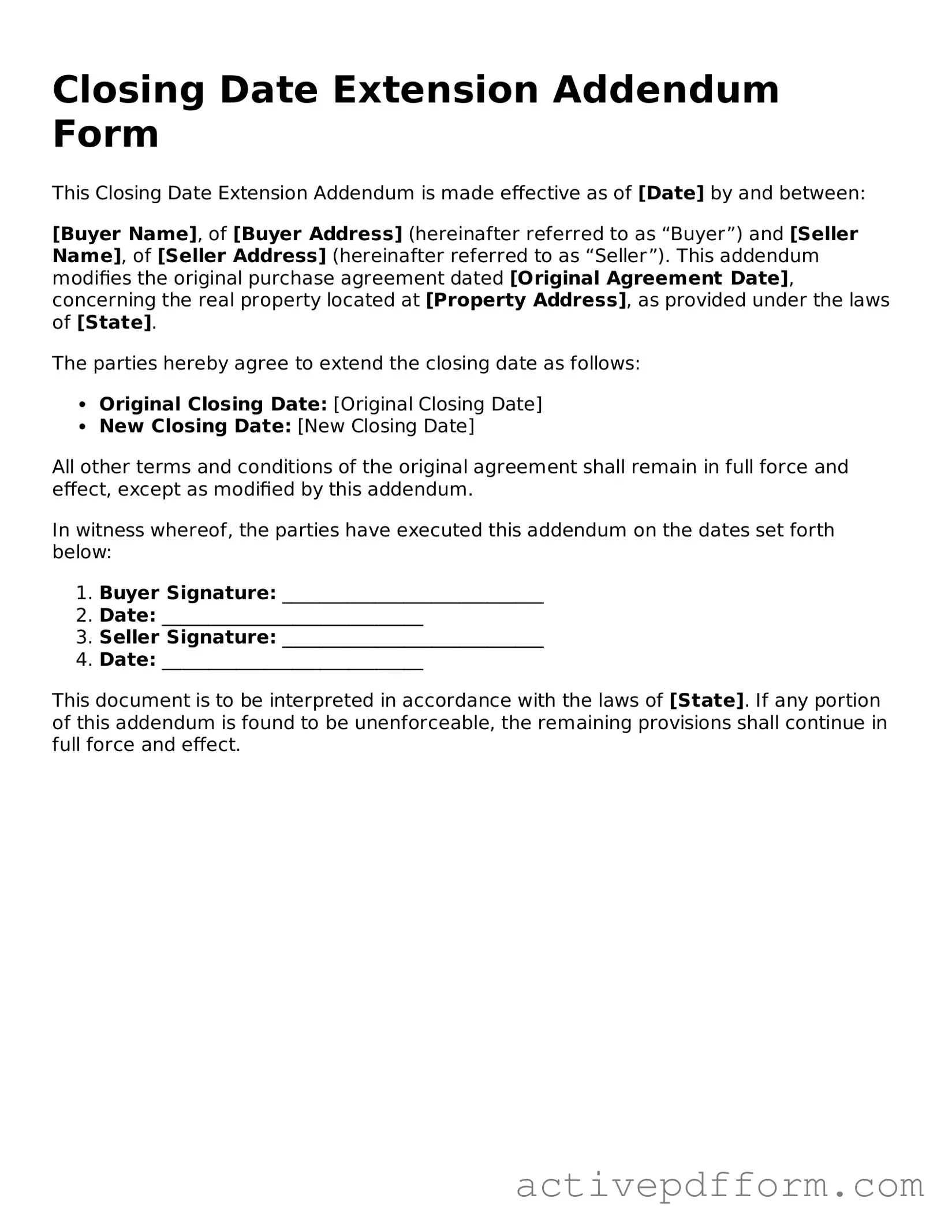What is the Closing Date Extension Addendum Form?
The Closing Date Extension Addendum Form is a document used to formally extend the closing date of a real estate transaction. This addendum is typically added to the original purchase agreement when both parties agree that more time is needed to finalize the deal.
When should I use the Closing Date Extension Addendum Form?
This form should be used when either the buyer or seller requires additional time to complete the necessary steps before closing. Common reasons include delays in financing, inspections, or other contingencies that have not been met by the original closing date.
Who needs to sign the Closing Date Extension Addendum Form?
Both the buyer and the seller must sign the form to ensure that the extension is legally binding. It is important that all parties involved in the transaction are in agreement regarding the new closing date.
How do I fill out the Closing Date Extension Addendum Form?
To complete the form, you will need to provide details such as the original closing date, the new proposed closing date, and any relevant information regarding the reasons for the extension. Ensure that all parties review the document before signing to confirm accuracy and agreement.
Is there a fee associated with using the Closing Date Extension Addendum Form?
There may be fees associated with extending the closing date, depending on the specific terms of the original purchase agreement and any applicable lender requirements. It is advisable to check with your real estate agent or attorney for guidance on potential costs.
What happens if the Closing Date Extension Addendum Form is not used?
If the addendum is not used and the closing date is missed, it may lead to complications, including potential breaches of contract. This could result in penalties or the possibility of the buyer losing their earnest money deposit. It is best to document any changes formally.
Can the Closing Date be extended multiple times?
Yes, the closing date can be extended multiple times if both parties agree. Each extension should be documented with a new Closing Date Extension Addendum Form to maintain clarity and legal standing.
What if only one party wants to extend the closing date?
If only one party wishes to extend the closing date, the other party must agree to the extension for it to be valid. Open communication is essential to reach a mutual agreement and to avoid any misunderstandings.
How does the Closing Date Extension Addendum affect the overall transaction timeline?
The extension will adjust the overall timeline of the transaction. It is important to communicate the new timeline to all parties involved, including lenders, inspectors, and any other stakeholders, to ensure a smooth transition to the new closing date.
Where can I obtain the Closing Date Extension Addendum Form?
The form can typically be obtained through real estate agencies, online legal document services, or from a real estate attorney. Ensure that you are using the most current version of the form to comply with local regulations.
